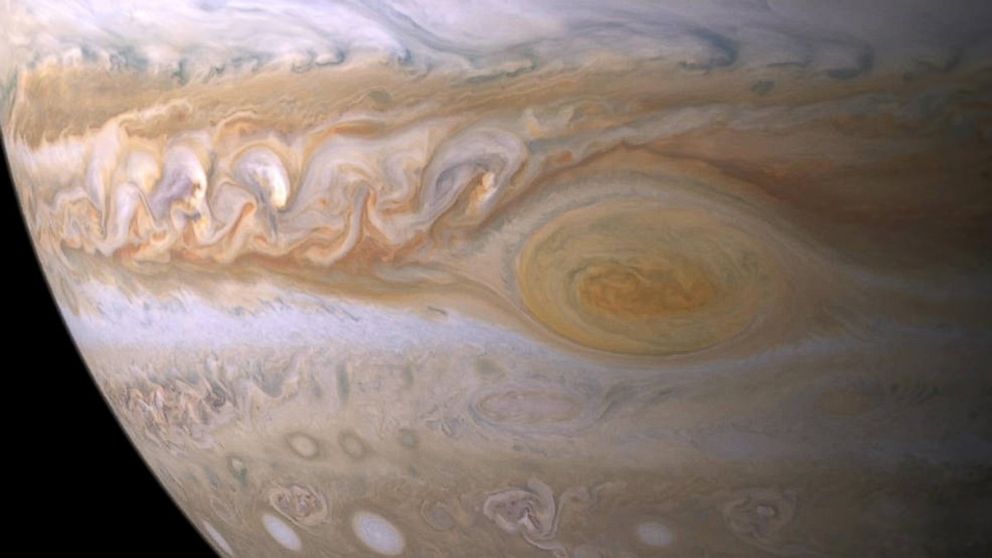The Curious Case of Jupiter's Massive Red Spot
The giant spot continues to swirl and is twice the size of Earth.

— -- If you thought weather on Earth was extreme, check out Jupiter.
A swirling red spot twice the size of our planet has long been a curiosity to NASA scientists for years. The area is a storm with ferocious winds peaking at 400 miles per hour, but scientists are eager to unlock the mystery of why the storm has reddish hues.
Understanding more about the gas giant's tumultuous red spot could help scientists gain new insights into weather patterns on Earth, which operate under the same physics as those on Earth, according to Amy Simon, a planetary atmospheres expert at NASA.
It is believed Jupiter’s upper atmospheric clouds consist of ammonia, ammonium hydrosulfide, and water. The NASA team is currently focusing on which combinations of the chemicals and conditions could lead to the red color seen swirling in the red spot.
One possible theory is a colorless ammonium hydrosulfide layer beneath the clouds could be reacting to UV radiation from the sun, according to the NASA team, who plan to publish research in the journal Icarus later this year.
Another reason why weather is so fierce and fascinating on Jupiter is the planet's composition. One thousand times as big as Earth, Jupiter is mostly comprised of gas and has no solid ground to help weaken the incredible red spot storm.




